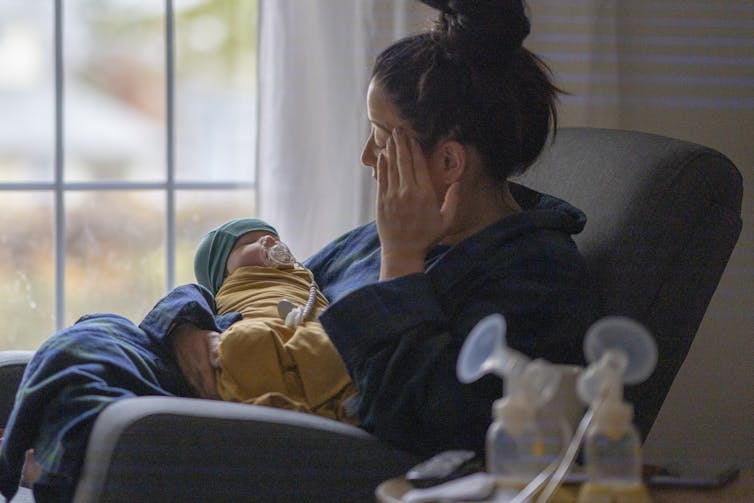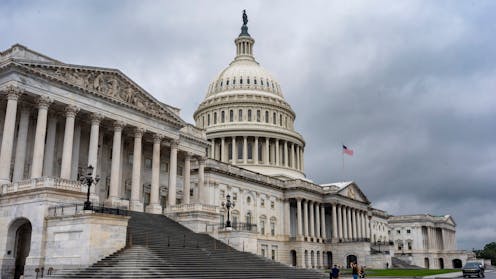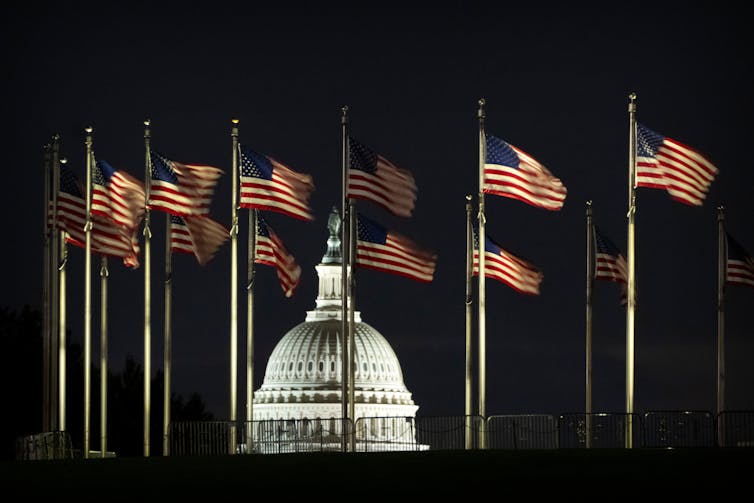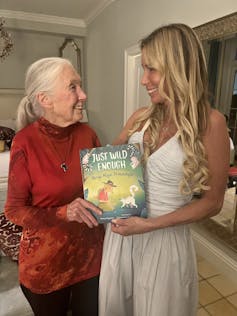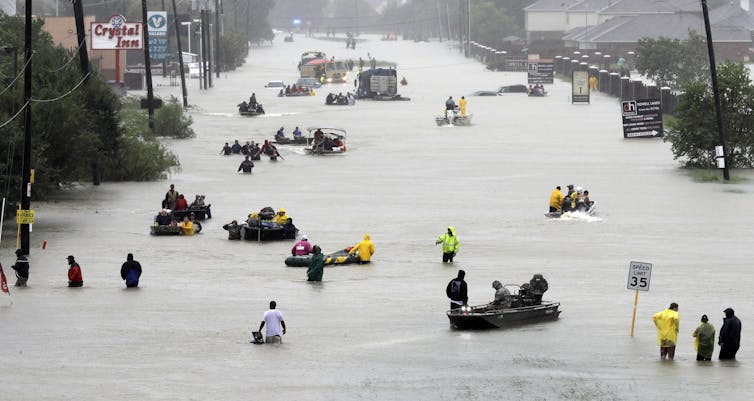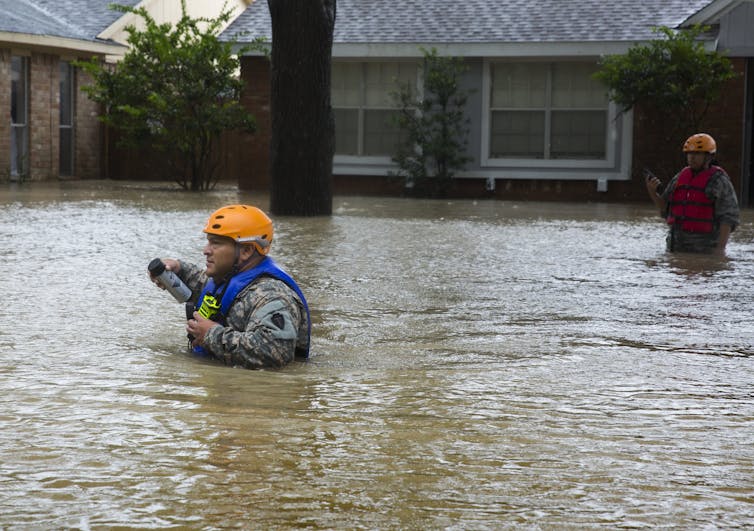Source: The Conversation – USA (2) – By Jared Bahir Browsh, Assistant Teaching Professor of Critical Sports Studies, University of Colorado Boulder
When Shohei Ohtani stepped onto the field at the Tokyo Dome in March 2025, he wasn’t just playing a game – he was carrying forward more than 100 years of baseball ties between the U.S. and Japan.
That history was front and center when the Los Angeles Dodgers and Chicago Cubs opened their 2025 regular season facing off in the Tokyo Series on March 18 and 19. The two games featured several players from Japan, capping a slate of events that included four exhibition games against Japanese professional teams.
It was a massive financial success. Marking MLB’s first return to Tokyo since 2019, the series generated over US$35 million in ticket sales and sponsorship revenue and $40 million in merchandise sales.
For MLB, which has seen significant viewership growth this season, it was proof that its investment in Japan and international baseball over the past three decades has been paying off.
Baseball’s early journey to Japan
Baseball, which is by far the most popular sport in Japan, was introduced to the nation during the Meiji Restoration in the late 19th century.
American baseball promoters were quick to see the potential of the Japanese market, touring the country as early as 1908. The most famous such tour took place in 1934 and featured a number of American League All-Stars, including Babe Ruth and catcher Moe Berg, who was later revealed to be a U.S. spy.
That trip had a long legacy. The U.S. All-Stars faced a team called The Greater Japan Tokyo Baseball Club, which, a year later, barnstormed in the United States. When they played the San Francisco Seals, the Seals’ manager, Lefty O’Doul – who later trained baseball players in Japan – suggested a name change to better promote the team for an American audience.
Commenting that Tokyo is the New York of Japan, O’Doul suggested they take on one of their team names. And since “Yankee” is a uniquely American term, The Greater Japan Tokyo Baseball Club was reborn as the Tokyo (Yomiuri) Giants.
When the Giants returned to Japan, the Japanese Baseball League was formed, which was reorganized into Nippon Professional Baseball in 1950. The Giants have gone on to dominate the NPB, winning 22 Japan Series and producing Sadaharu Oh, who hit 868 home runs during his illustrious career.
Breaking into MLB
The first Japanese-born MLB player, Masanori Murakami, debuted for the San Francisco Giants in September 1964. But his arrival wound up sparking a contractual tug-of-war between the NPB and MLB. To prevent future disputes, the two leagues signed an agreement in 1967 that essentially blocked MLB teams from signing Japanese players.
By the 1990s, this agreement became untenable, as some Japanese players in NPB became frustrated by their lack of negotiating power. After the Kintetsu Buffaloes refused to give Hideo Nomo a multiyear contract after the 1994 season, his agent found a loophole in the “voluntary retirement clause” that would allow him to sign with an MLB franchise. He signed with the Los Angeles Dodgers in February 1995.
Nomo’s impact was immeasurable. His “tornado” windup and early success made him one of the most popular players in the major leagues, which was recovering from the cancellation of the World Series the previous year. In Japan, “Nomo fever” took hold, with large crowds gathering television screens in public to watch him play, even though his games aired in the morning. Nomo helped drive Japanese sponsorship and television rights as his first season ended with him winning National League Rookie of the Year.
But within a few years, disputes over contracts soon showed the need for new rules. This ultimately led to the establishment of posting rules for NPB players looking to transition to the major leagues.
The rules have shifted some since they were set out in late 1998, but if a player declares their intention to leave NPB, then MLB teams have a 45-day window to negotiate. If the player from NPB is under 25 or has less than nine years of professional experience, they’re subject to the limited MLB signing pool for international players. Otherwise, they’re declared a free agent.
A wave of stars
The new rules led many more Japanese players to join major league baseball from Nippon Professional Baseball: Of the 81 Japanese players who’ve played in the majors, all but four played in NPB before their debut. Ichiro Suzuki, who became the first Japanese player inducted into the National Baseball Hall of Fame, was also the first Japanese position player to make the leap.
Other players, like Hideki Matsui, the only Japanese player to be named World Series MVP, continued the success. And then came Ohtani, a two-way superstar who both hits and pitches, drawing comparisons to Babe Ruth.
For MLB, Japanese players haven’t just boosted performance on the field – they’ve expanded its global fan base. The Dodgers brought in over $120 million in increased revenue in Ohtani’s first year alone, easily covering his salary even with Ohtani signing the richest contract in baseball history. The franchise has also seen its value increase by at least 23% to nearly $8 billion. MLB has also seen a significant increase in viewership over the past two seasons, partially driven by the growing interest from Japan.
As American sports leagues deal with an increasingly distracted, fragmented domestic audience, it’s not surprising that they’re looking abroad for growth. And as MLB teams prepare to court another wave of Japanese stars this offseason, it’s clear that its decades-long investment in Japan is paying off.
![]()
Jared Bahir Browsh does not work for, consult, own shares in or receive funding from any company or organization that would benefit from this article, and has disclosed no relevant affiliations beyond their academic appointment.
– ref. Why Major League Baseball keeps coming back to Japan – https://theconversation.com/why-major-league-baseball-keeps-coming-back-to-japan-264668




